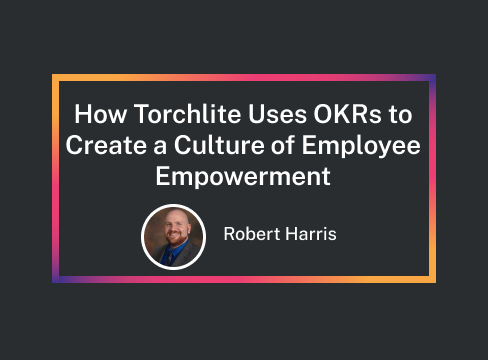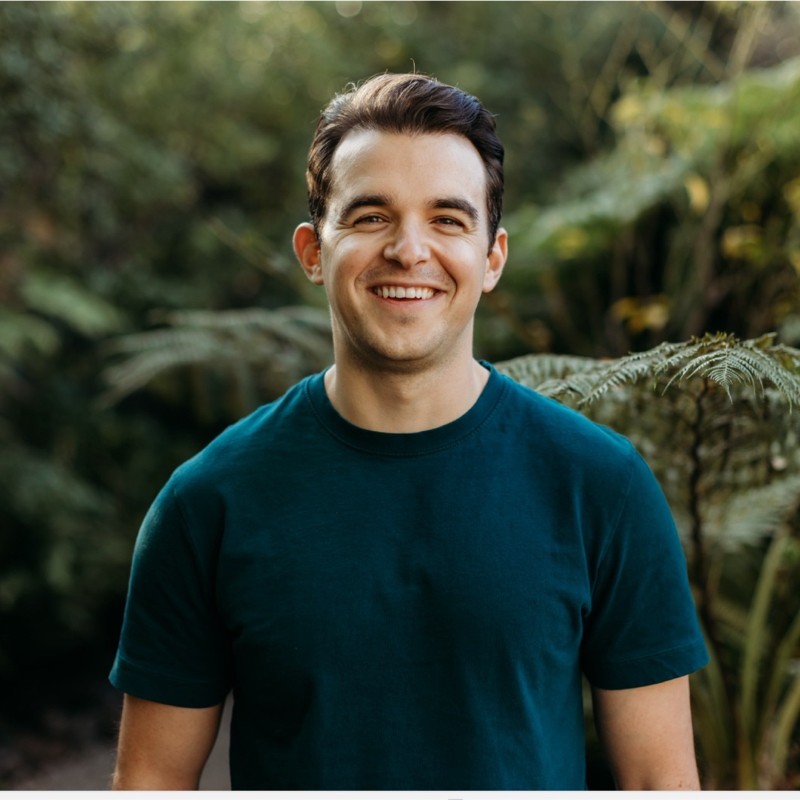This article is part of our Q1 spotlight on Partner Program Planning, Goal Setting, and Forecasting. Learn more in the series introduction.
Robert Harris began his career as a software developer and has spent his entire career in the world of technology startups. After working to grow and sell a few technology startups, Robert now spends his time in the partner ecosystem space as the CEO of Torchlite.
Today, Robert joins us to share his insights on using OKRs to create a culture of employee empowerment through transparency, alignment, and accountability.
Using OKRs to Improve Team Engagement & Collaboration

Robert Harris is such a big advocate of OKRs that it’s hard for him to think about a time before he used them with his team. He explained, “As far as I’m concerned, in order to have effective cross-functional communication and collaboration, you need to use OKRs. At Torchlite, our decision-making relies on transparency and self-empowerment. In my role as CEO, I love having visibility into what the other teams’ or individuals’ OKRs are.”
“If I need something from another team for my OKRs, it’s easier to make that ask and see results when they know why I’m asking them. Similarly, since I know what their OKRs are, I can better anticipate their priorities and how they’ll need to shift in order to accommodate my ask,” Robert shared tactically.
Setting and Sharing OKRs with the Team
When it comes to setting OKRs, Robert explained they focus on conveying transparency from an employee empowerment and engagement perspective. “We use OKRs to explain what the target is and why it’s the target. We’ve worked on establishing a set of principles and values for how we go about things and have a culture of employee empowerment. If I’m conveying the why to you, then I’m putting you in the position of creating and having full ownership of your OKRs.”
As for who sets OKRs, Robert shared, “There are departmental and individual OKRs. Each person is responsible for creating their own, but everyone gets support for implementing them. We follow the more pure form of OKRs — we don’t just view them as KPIs, especially in terms of salary and job performance. Of course, we still have KPIs for determining if the business is on track, but we use OKRs for the high-level objectives that will move the needle for the business. These somewhat function as stretch goals that allow us to cut through the noise and focus on achieving these objectives to make a difference in the organization.”
Robert and his team set OKRs quarterly that flow down from corporate annual OKRs and evaluate their progress weekly. He explained, “We use the Torchlite tool to measure partner progress. From a partner team perspective, we don’t need to look at Salesforce because we pull all that data into Torchlite. We do lots of revenue-based tracking, integrations, and more.”
Advice for Getting Started with OKRs
It’s a common misconception that OKRs and KPIs are interchangeable; they’re not. Robert emphasized, “While implementing OKRs, you still have the ability to measure the business using KPIs. It can be challenging at first to get behind the idea that OKRs aren’t for measuring job performance — it’s not about achieving 100% or there will be consequences.”
Instead, Robert explained, “OKRs are really about trying to achieve 70%. It’s good to have challenging goals, even if you can’t reach all of them. Just the effort of working toward those goals means you’re going in the right direction. I recommend others really try to stay true to that and try to embrace it. Don’t accidentally send signals that not hitting all your OKRs 100% is bad.”
As for setting powerful OKRs, Robert shared, “I think OKRs fall flat in a few situations. If you try to set and forget, it will be meaningless quickly. Similarly, if you’re tracking all of your performance indicators, you won’t track the things that really move the needle. It’s really valuable to stay focused on big things that will move the needle, then break them down into measurable goals. It can take some creativity to take a big goal and figure out how it breaks down into an individual person’s goals. I work hard to make sure everyone sees how their piece plays into the larger picture.”
OKRs for 2022
Even though Torchlite has been around since 2015, Robert shared they still run the business as a startup from a perspective of managing uncertainty and trying to drive significant growth. “I’m a big believer in lean principles in terms of validating growth hypotheses and running experiments to prove our best practices. That’s the framework that comes into play when thinking about all of our OKRs being able to get information that lets us know where to focus and where to invest resources.”
For 2022, Torchlite has several initiatives across product and partner teams. “Because of the space that we’re in, everything is partner team-related (either ours or our partners). We have a couple of new initiatives in terms of new products and features that we’re looking at launching, such as our new enterprise app store, unlocking our product-led growth model, and having our first set of beta customers using account mapping insights.”
This quarter, in particular, will be huge for Torchlite, and the OKRs Robert has worked to set for his team will keep his team aligned and engaged in reaching the long-term vision. Learn more about the difference between OKRs and KPIs, as well as best practices for using both when you download Strategies for Achieving your Partnerships Goals.
Experienced partnership professionals will join us over the next few weeks to share their insights on planning, goal setting, and forecasting. Be sure to follow us on LinkedIn to catch all of the interviews as they’re published.
Join The 1850+ Leaders Transforming Partnerships
As a member of Partnership Leaders you will:
- Build and learn with the top partner people at the best companies around the world.
- Increase your impact and accelerate your career with proven resources, tools, and best practices.
- Grow a network of peers, partners, and advisors with common objectives.


